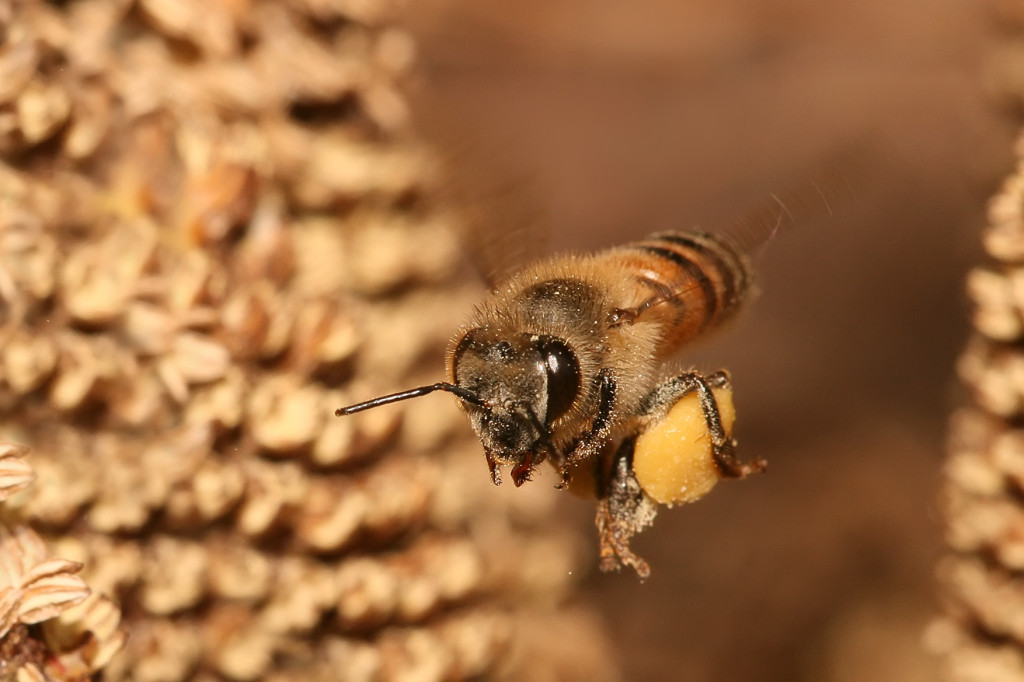We are hearing a lot in the news about the loss of honey bees, which we know is a potential threat to our food systems. But before I address this topic further, allow me to say a bit about insect diversity. The world of flowering plants is diverse with an estimated 352,000 species worldwide, but its diversity pales in comparison with the insect world that is estimated to be 15 times more diverse, with a species count of somewhere around 5.5 million species. Approximately 20,000 new species of insects are discovered each year. It is estimated that we may currently know only about 20% of the world’s existing insects. I share this to say that topics related to insects are complex and that we are far from having all the answers about any topic related to pollinators.
Now, back to honey bees. A 2014 U.S. Department of Agriculture report states that honey bee colony loss has experienced an eight-year average loss of 29.6 percent per year. Recognized factors for this decline include viruses and other pathogens, parasites, problems of nutrition from lack of diversity in pollen sources, and sublethal effects of pesticides combining to weaken and kill bee colonies. Colony Collapse Disorder (CCD) is a name that was given about ten years ago to this population loss that is often seen suddenly in bee hives.
Pesticide contamination, and specifically the group of neurotoxic insecticides called neonicotinoids, is coming under increased focus as a possible cause of CCD. The insecticide is applied to the seed coat of many common crops, taken up by plant roots, and translocated to all parts of the plant, including flowers and pollen. Neonicotinoid use in crop protection has increased dramatically in the last 20 years and significant financial investments have been made to implement this effective group of insecticides.
Whether or not neonicotinoids that are showing up in beehives are causing CCD is not something I can answer here. Some European countries think there is a connection and have begun to ban the use of neonicotinoids. The validity of the connection between neonicotinoids and CCD is a complex issue that can only be answered with unbiased, scientific research. If chemical producers feel strongly that neonicotinoids are not contributing to CCD, I think that they would want to be pouring money into reputable research to clear their products from blame.
The viability of natural ecosystems and healthy food systems relies on both native pollinators and honey bee populations. Local farmer and beekeeper, Deborah McSweeney, has invested significant time researching and living this topic and also knows a lot about bee population collapse. She will be our featured presenter next Tuesday evening as part of our Winter Lecture Series. Join us to learn more about this topic.

